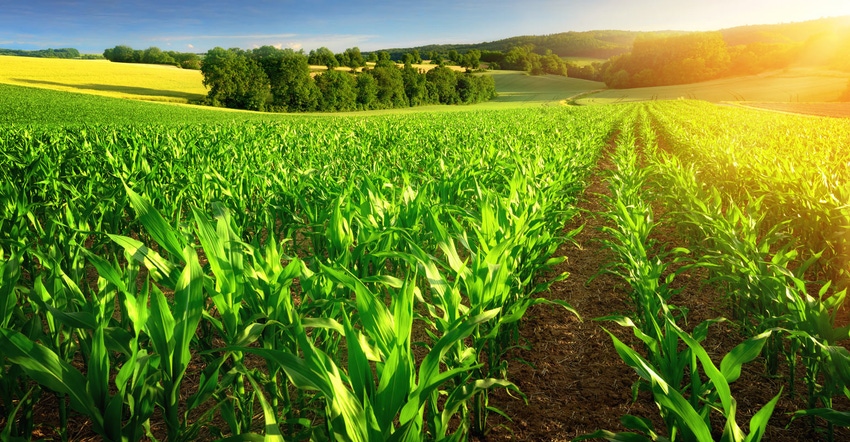November 18, 2020

Sponsored Content
Sustainability might be one of the biggest buzz words across a myriad of industries as of late. But what’s driving the demand for sustainable practices around the world, and what impact does that have on farmers today? It can be a daunting topic, and a huge ask for individuals, farmers and businesses alike.
The United States Secretary of Agriculture Sonny Perdue recently announced the Agriculture Innovation Agenda, an initiative to align resources, programs and research to position American agriculture to better meet future global demands. The goal is to stimulate innovation so that American agriculture can meet the goal of increasing production by 40%, while cutting the environmental footprint of US agriculture in half, all by the year 2050. It’s a big ask over a long timeline, but one that we hope to see achieved.
For now, the push for sustainability is largely consumer driven. Consumers want traceability, and corporations are paying attention. Corporations like Walmart and McDonald’s are talking to their suppliers about creating transparent supply chains. In turn, those suppliers, along with consumer-facing brands, want to be seen as “doing the right thing.”
As the drive for sustainability trickles down from the Walmarts and the McDonald’s of the world, eventually the farmers and suppliers of raw materials are called upon to increase their sustainability and traceability. So, what things are impacting sustainability in the world of agriculture right now?
4R Nutrient Stewardship
The 4Rs of nutrient stewardship focus on fertilizer and its application to crops. They promote best management practices to achieve the goals of your crops while minimizing field nutrient loss and maximizing crop uptake. The 4Rs themselves refer to:
Right Source: Ensuring that the chosen fertilizer matches crop needs
Right Rate: Matching the rate of application to what the crop will use
Right Time: Making nutrients available when crops need them
Right Place: Keeping nutrients where the crops can use them
By making sure nutrient applications meet the above requirements, farmers can improve net farm income while reducing losses of nutrients to the environment, key to the sustainability of farms and the continued soil health.
Technology & Performance
Changing technology has the ability to drastically improve sustainability practices on farms. Whether it’s technology in the equipment a grower might use, or the technology used to manufacture new products for use on the farm, it can only continue to improve the chances of hitting those key USDA metrics.
Precision agriculture can enable growers to target fertilizer to key zones, reducing their overall usage. Plus, ensuring growers apply fertilizer in a more tactical fashion helps increase the performance of their crops while reducing the chances of runoff and wasted product.
In regards to technology used in creating new products, we only have to look to SymTRX™ to see how new technologies can improve sustainability while boosting performance for growers. SymTRX has been proven to reduce nitrogen leaching into soils, improving downstream water quality wherever it is used. On top of that, SymTRX has the ability to increase yields and provide a 3 to 5 times return on investment. SymTRX is truly an advancement in fertilizer technology that’s simple for growers to implement and smart for the future.
Collaboration
To achieve sustainability goals, everyone, from farmers, to consumers, to corporations, are going to have to work together. Luckily, we’re already seeing this happen across the board, with some companies that would have once been fierce competitors coming together to create sustainable solutions.
Programs like the Ecosystem Services Market Consortium (ESMC) are working to incentivize farmers and ranchers to improve soil health systems that benefit society, earning credits that are then paid for by buyers to reduce their environmental and supply chain impacts. The ESMC is a collaboration of members from across the entire agricultural supply chain and value chain, working to ensure the program can scale successfully.
We also see corporations coming together to work directly with farmers to improve sustainability while providing a financial incentive to growers. PepsiCo and Cargill work with the Practical Farmers of Iowa to help farmers plant cover crops, going as far as paying farmers to implement them on a percentage of their acres. It’s just another example of larger corporations driving sustainability in their supply chains by working with growers.
While driven heavily by consumers, the current drive for sustainability is directly impacting growers around the world. Between new technologies, new collaborations, and the continuous innovation we see from farmers, we’re sure that we can hit sustainability targets and improve farming for generations to come. Want to learn more about how technology is continuing to improve fertilizer efficiency? Check out our recent article on the role of value-added fertilizers and how they’re driving sustainability.
About the Author(s)
You May Also Like




